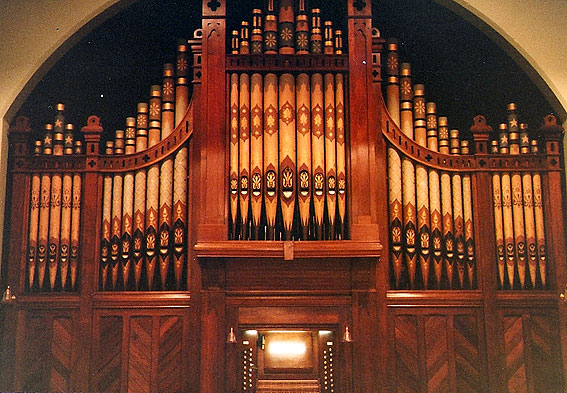Hugh Brandon
(1906–1984)
Hugh Earle Brandon, musician and educationist, was born on 24 July 1906 in South Brisbane, seventh of eight children of Thomas William Brandon, a farmer from England, and his Queensland-born wife Mary Magdalene Fanny, née Anger. Raised on a farm near Allora, Hugh was educated at Berat, Wellington Point and Wynnum Central state schools. He learned piano first at Warwick from Ethel Hancock and, after 1917, in Brisbane from Hilda Foster.
On leaving school he began work with a music retailer, G. J. Grice Ltd, Brisbane. He studied with Robert Dalley-Scarlett and gained an associate diploma in pianoforte from Trinity College of Music, London, in 1925. Winning a three-year scholarship to Trinity College, in 1926-29 he studied piano with Charlton Keith and organ with Stanley Roper, who fostered his love of church music. George Oldroyd taught him music harmony and counterpoint.
Brandon played the organ at several churches in London, including the Methodists’ Central Hall, Westminster, and the Presbyterian Church, Bromley. In 1929 he qualified as a fellow of Trinity College and was awarded a licentiate of the Royal Academy of Music; next year he studied piano for nine months in Vienna with Otto Hinkleman.
Returning to Brisbane in 1931 Brandon taught piano and organ privately, and, with Eunice Cochrane, a singing teacher, staged a series of recitals, `concerts intimes’, sometimes with associate guests. On 19 December 1939 at Albert Street Methodist Church, Brisbane, he married Dorothy May Matters, a clerk. Deeply religious, he dedicated his musical gifts to the service of God. He was conductor of the Brisbane Bach Society (1931-46), and organist and conductor at city Presbyterian churches: Ann Street (1933-45) and St Andrew’s, Creek Street (1945-78). During his long tenure at St Andrew’s he was to conduct many fine performances of major choral works, including J. S. Bach’s B minor Mass and St Matthew Passion, George Handel’s Messiah, Antonin Dvorak’s Stabat Mater, Johannes Brahms’s Requiem, Gustav Holst’s Hymn of Jesus and Edward Elgar’s The Light of Life.
An examiner for the Australian Music Examinations Board in Queensland from 1942, Brandon travelled throughout the State in this role for forty-two years. In 1945 he gained an associate art of speech diploma from the AMEB, and the University of Queensland appointed him assistant to Sydney May, organiser in music. He revived the Queensland University Musical Society as a women’s choir, adding men from 1947; he was to conduct the choir until 1965, when he became patron. On 1 January 1953 Brandon took over from May as organiser in music and was promoted to senior lecturer.
Inaugural head (1955-66) of the department of music, he served as dean of the faculty of music in 1970. That year the university conferred on him an honorary B.Mus. Late in his career he developed a strong interest in Russian church music, and visited the Soviet Union in 1971 to explore this field. His publications included Fifty Folk Songs (1969), 12 Studies in Musicianship (1969) for piano, and eight carols for four-part choir (1973). There were also some unpublished choral pieces. He retired from his university post in December 1973. In 1978-84 he was again choirmaster at Ann Street Presbyterian Church.
Brandon made a major contribution to raising standards in music in Queensland, introducing a generation of students to some of the best choral music in the repertoire. He particularly encouraged those singers whose potential he recognised early: some of his students later received national acclaim, notably Raymond McDonald, Janet Delpratt and James Christiansen. He also contributed to improving speech and drama in the State. President of the State branches of the Arts Council of Australia (1957-61) and of the Musica Viva Society of Australia (1964-66), he was also a member (1959-71) of the Queensland Conservatorium of Music advisory council.
Although Brandon suffered from diabetes for most of his life, he showed tremendous energy and determination in pursuing his goals. He was gentlemanly in manner with a bright demeanour, but occasionally he fell out with authorities when he held different views. His colleagues and friends, who valued his sincerity and generosity, set up the Hugh Brandon prize at the University of Queensland in 1980. Survived by his wife, and their daughter and son, he died on 19 April 1984 at his Moorooka home and was cremated after a funeral service at the Ann Street Church.
From an article by Gordon D. Spearritt in the Australian Dictionary of Biography, National Centre of Biography, Australian National University, http://adb.anu.edu.au.
